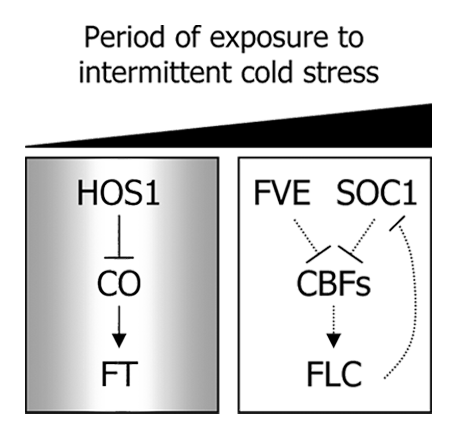Figures & data
Figure 1. . Schematic model illustrating the cold stress regulation of floral transition. Two distinct signaling pathways are involved in mediating the temperature regulation of flowering induction in Arabidopsis. The HOS1-CO-FT circuit is relevant in short-term cold stress response, whereas FLC-dependent pathways are critical for long-term cold response (vernalization). In response to cold stress, CO degradation is triggered by the HOS1 E3 ligase, and thereby flowering is delayed due to the suppression of FT expression. CO integrates cold stress signals into photoperiodic flowering and fine-tunes floral transition under fluctuating temperature conditions.
